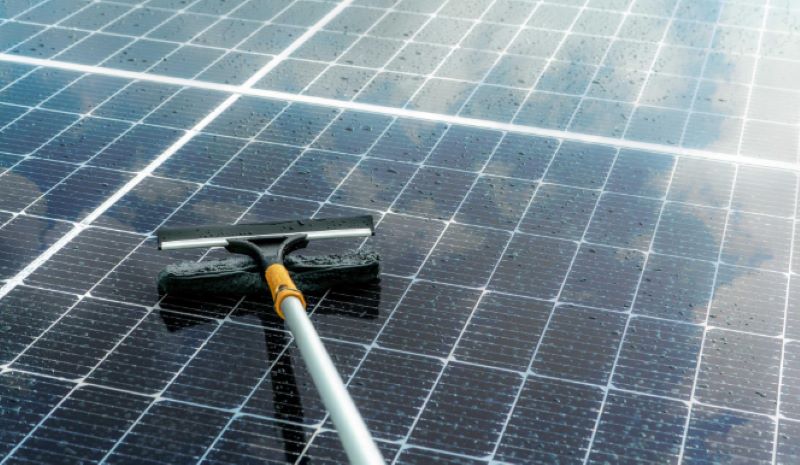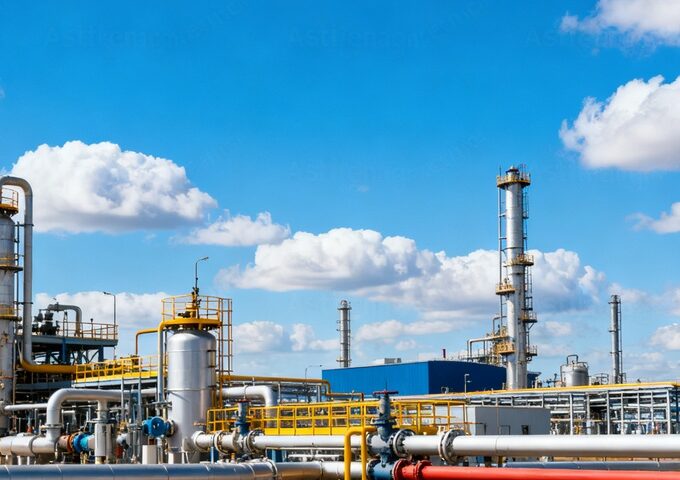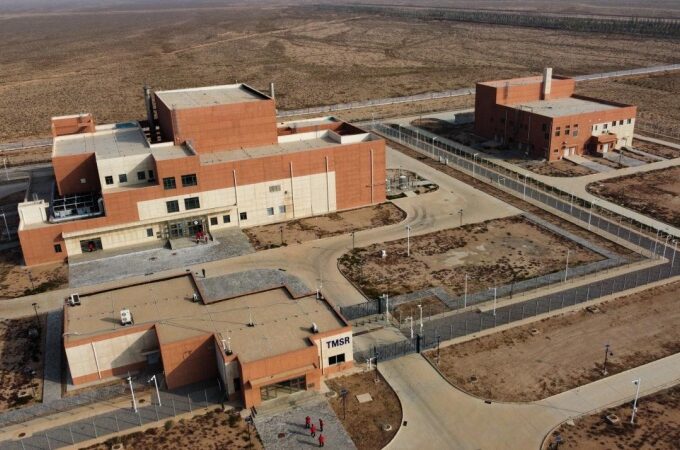As global demand for renewable energy continues to rise, solar energy, as one of the most promising green energy sources, is being widely applied in various power generation facilities. However, over time, photovoltaic (PV) panels accumulate dust on their surfaces, which can significantly affect the efficiency of solar energy conversion, especially in arid regions like deserts. Traditional cleaning methods typically rely on water or mechanical brushes, which not only consume large amounts of water but may also damage the surface of the PV panels, reducing their long-term efficiency. To address this challenge, researchers at the Massachusetts Institute of Technology (MIT) have developed an innovative waterless, contactless photovoltaic panel cleaning technology that efficiently and sustainably removes dust from PV panel surfaces without causing any physical damage.
Technical Principle: Electrostatic Repulsion Makes Dust Jump Off
MIT’s research team utilized the principle of electrostatic repulsion to develop this waterless cleaning technology. Specifically, the researchers use a special metal electrode system to generate a charge on the surface of the PV panel, which in turn removes accumulated dust through electrostatic forces. In the experiment, they suspended a metal rod electrode above the surface of the PV panel, which was connected to a guide rail on the sides of the panel. The electrode moves across the surface, maintaining a certain distance from the glass but close enough to charge the dust particles on the glass surface. As the electrode moves, the electrostatic repulsion between the charged glass and dust particles causes the dust to “jump” off the surface, thereby achieving automatic dust removal.
The key to this method is the “contactless” feature—the electrode does not directly touch the surface of the PV panel, avoiding the scratches or damage that can occur with traditional mechanical cleaning methods. Moreover, by adjusting the speed of the electrode’s movement, the entire surface of the panel can be cleaned evenly, ensuring that dust is effectively removed from every corner.
Key Experiments and Findings: Humidity’s Effect on Cleaning Performance
To validate the effectiveness of this technology, MIT researchers conducted numerous experiments, particularly focusing on the impact of different humidity levels on the cleaning process. They found that humidity plays a significant role in the electrostatic dust removal process. The higher the humidity, the more likely a thin layer of water forms on the dust particles, which enhances the electrostatic effect and leads to better cleaning results. In their experiments, they found that when the humidity exceeds 30%, the cleaning system is capable of removing almost all dust particles. When humidity is below 30%, cleaning performance decreases, but this challenge can still be overcome, particularly in desert and arid regions.
Additionally, the experiments used simulated desert dust from Arizona and were conducted under varying humidity conditions. The results showed that even in low humidity environments, adjusting the cleaning time and system parameters could still achieve good cleaning results. This finding lays the foundation for the widespread application of the technology in desert and arid areas.
Technological Advantages: Water Conservation, Cost Reduction, and No Surface Damage

Compared to traditional photovoltaic panel cleaning methods, this waterless, contactless cleaning technology offers several clear advantages:
- Water Conservation: Traditional cleaning methods require large amounts of water, which is especially problematic in water-scarce regions. This waterless cleaning technology eliminates water consumption, making it highly suitable for arid regions like deserts, helping to alleviate water resource pressures.
- Lower Operating Costs: Currently, cleaning costs account for about 10% of the overall operating costs of solar power systems. Traditional cleaning methods require frequent use of water and brushes, making the process both time-consuming and costly. The new system eliminates the need for water and brushes, significantly reducing related expenses. Moreover, the automated cleaning process can occur more frequently, improving the power output of the PV panels and increasing overall revenue.
- Avoidance of Surface Damage: Common dry-brushing methods may cause scratches or other damage to the surface of the PV panels, affecting their light-to-electricity conversion efficiency. This contactless cleaning method avoids physical contact, ensuring that no damage is done to the PV panel surface, helping to extend the lifespan of the equipment.
Application Prospects and Outlook: Supporting Global Solar Power Generation
As the global solar industry continues to grow, particularly with the increasing construction of large-scale photovoltaic power plants in desert and arid regions, the issue of dust accumulation on PV panels has become an urgent problem to solve. Desert areas such as China’s Inner Mongolia, India’s Rajasthan, the UAE, and the U.S. states of California and Nevada are characterized by long periods of drought and frequent sandstorms, resulting in significant dust buildup on PV panels. Traditional water-based cleaning methods not only require large amounts of water but also risk damaging the surface of the panels due to friction from brushes, ultimately reducing panel efficiency and raising maintenance costs. This waterless, contactless cleaning technology addresses the dust issue and is completely independent of water, making it particularly valuable in regions with limited water resources.
Furthermore, the automated nature of this technology allows for regular cleaning without human intervention, reducing labor costs and complexity. For large-scale solar power plants, this feature can significantly improve operational efficiency and reduce labor costs. The contactless cleaning method also lowers the frequency of equipment maintenance, further enhancing the economic benefits of solar power plants. As automated cleaning systems become more widespread, solar power plants will be able to maintain a higher level of efficiency and cost-effectiveness, providing a solid foundation for the broader application of solar energy.
As the global solar market continues to expand, especially in developing countries and emerging markets, solar power has become an integral part of energy transition. For these regions, reducing water consumption in energy production and improving cleaning efficiency will greatly promote the sustainable development of the solar industry. The waterless, contactless photovoltaic panel cleaning technology will help these regions reduce their reliance on water resources, further lower electricity production costs, and support the growth of a low-carbon, green economy. Moreover, as the technology advances, it may expand beyond thin-film solar panels to include crystalline silicon panels, greatly broadening its application and making it a critical tool in the global clean energy industry.
Conclusion
The waterless, contactless photovoltaic panel cleaning technology developed by MIT represents a groundbreaking innovation in the solar industry. It not only provides a more efficient and water-saving cleaning solution for global solar power generation facilities but also reduces operating costs and prevents surface damage. As the technology continues to mature and expand, it will play a crucial role in supporting the sustainable development of solar power, contributing positively to climate change mitigation and carbon emissions reduction.












